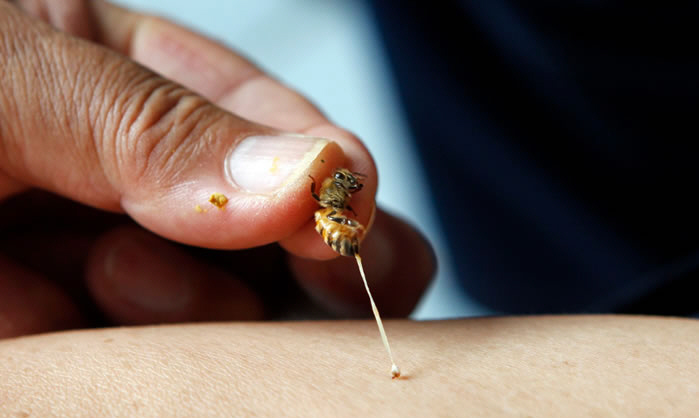What to do when a wasp sting?
Painful and sometimes dangerous: a wasp sting. Whether ice cream, cake, soda or sausage, food and drink is taken outdoors, it means a feast of wasps that are already being lured by small food particles. In dangerous circumstances sting of wasp can not always be avoided and need help quickly despite taking precautions.
 Wasps often disturb us in the late summer on leisurely barbecue or ice cream coffee on open air. They saucily settle on the ice or swirl around the sausages. It is important in such situations to remain calm and avoid hectic movements. Just feel threatened animals when they run into a corner, for example, get caught in clothing or end up in the mouth. Even someone who walks a barefoot, risks being stung. It is better to avoid such situations and to be extra vigilant when you eat and drink. But even if all precautions are observed, a wasp sting can not be completely prevented.
Wasps often disturb us in the late summer on leisurely barbecue or ice cream coffee on open air. They saucily settle on the ice or swirl around the sausages. It is important in such situations to remain calm and avoid hectic movements. Just feel threatened animals when they run into a corner, for example, get caught in clothing or end up in the mouth. Even someone who walks a barefoot, risks being stung. It is better to avoid such situations and to be extra vigilant when you eat and drink. But even if all precautions are observed, a wasp sting can not be completely prevented.
Quick help for a wasp sting.
In general, a wasp sting is indeed painful but harmless if it does not affect the mouth and throat. But if you have allergies it is extremely dangerous. First action after an engraving should be cooling to prevent severe swelling and relieve pain. In this case you need cold compresses. In addition, fresh onions applied on the wound will be good, since their juice has anti-bacterial and anti-inflammatory properties. Similarly act compresses with diluted vinegar. Support offer ointments and gels but also homeopathic globules with bee venom, relieve the swelling and burning pain. When the wasp sting and you has strong edema and persistent ache, or this bite in the mouth and throat, you should see the doctor or call an ambulance. The same applies to the case of an allergic reaction which it can lead to anaphylactic shock in addition to severe swelling, dizziness, nausea, and shortness of breath, and acute life-threatening situation.